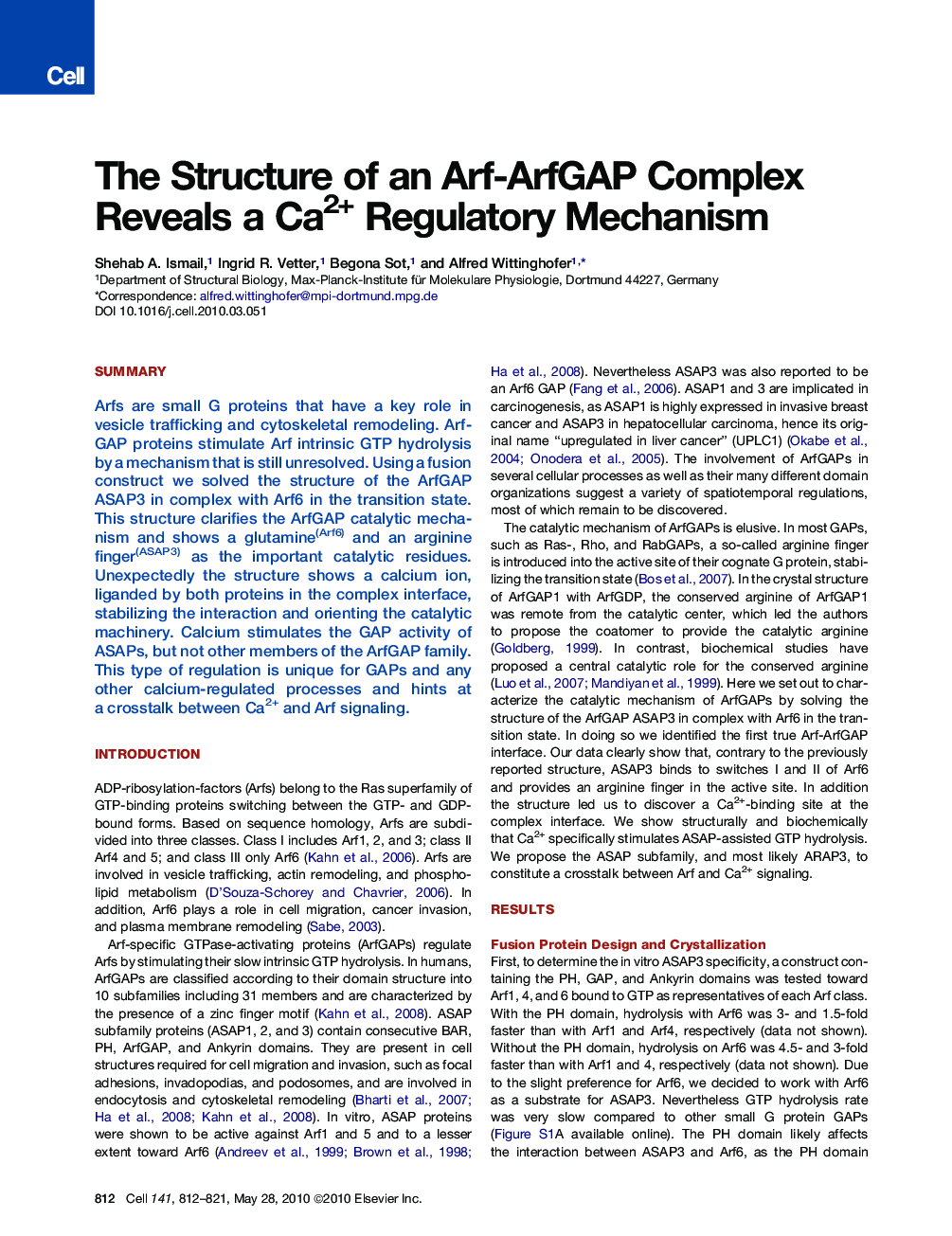| Article ID | Journal | Published Year | Pages | File Type |
|---|---|---|---|---|
| 2036696 | Cell | 2010 | 10 Pages |
SummaryArfs are small G proteins that have a key role in vesicle trafficking and cytoskeletal remodeling. ArfGAP proteins stimulate Arf intrinsic GTP hydrolysis by a mechanism that is still unresolved. Using a fusion construct we solved the structure of the ArfGAP ASAP3 in complex with Arf6 in the transition state. This structure clarifies the ArfGAP catalytic mechanism and shows a glutamine(Arf6) and an arginine finger(ASAP3) as the important catalytic residues. Unexpectedly the structure shows a calcium ion, liganded by both proteins in the complex interface, stabilizing the interaction and orienting the catalytic machinery. Calcium stimulates the GAP activity of ASAPs, but not other members of the ArfGAP family. This type of regulation is unique for GAPs and any other calcium-regulated processes and hints at a crosstalk between Ca2+ and Arf signaling.
Graphical AbstractFigure optionsDownload full-size imageDownload high-quality image (218 K)Download as PowerPoint slideHighlights► The ASAP3 arginine finger stimulates GTP hydrolysis on the Arf6 small G protein ► A calcium-binding pocket forms by the interaction of this ArfGAP and Arf6 ► Calcium stimulates the GTPase reaction by stabilizing the catalytic machinery ► Calcium regulation is a general feature of the ASAP protein subfamily of ArfGAPs
